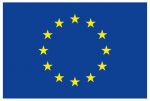Dr José Caro Ramón
DESCRIPTION
Earthquakes, landslides, avalanches, collapsed buildings…There are many situations in which a person could suddenly become trapped and unable to free him or herself without the assistance of search-and-rescue professionals.
Canine teams are used worldwide for rescue operations, for which the dogs receive rigorous training in locating victims. The dogs rely on their keen sense of smell in combination with their training in order to scout devastated regions and detect the telltale scent of a human being trapped amongst the wreckage. The dog moves within the search area, following its nose and the instructions of its handler. When it detects the scent of a trapped person, it indicates the area where it believes the person to be by remaining in the area and barking or using other indicators it has learned.
In the search-and-rescue process, wind is a key factor that can aid the dog by allowing it to cover large areas much more rapidly and efficiently. With a moderate wind of a few kilometres per hour, the olfactory range of the dog can increase to up to a few dozen meters. This allows the dog to cover the entire search zone in fewer passes.
When the total number of victims is unknown, the responsibility for determining that an area has been completely covered falls to the rescue operation coordinator. This decision will initiate a change of search area or the use of heavy machinery to clear debris. In both cases, the consequences could be fatal if there are still undetected survivors in the area. This decision currently relies solely on the opinion of one person. To determine whether any areas remain unsearched, the coordinator has to remember all of the routes the teams have travelled, as well as and the direction and speed of the wind. In practice, this requires spending more time in any one zone than should be necessary in order to ensure that the zone has been fully searched before moving on to look for other victims, for whom any delay could be fatal. Currently, this decision is taken without any technological help.
INNOVATION
Osmógrafo® assists the rescue coordinator in determining whether an area has been fully searched by canine teams. It consists of a GNSS tracking device attached to the dogs and a wind sensor that sends information to a central monitoring unit. The central unit combines positioning, wind properties and dogs’ scent capabilities to display areas already searched. Osmógrafo® is fully adapted to search-and-rescue operations, including a database with dogs’ olfactory capabilities, hiding places, the possibility to geo-reference an image of the search area, definition of the search area itself, management of victims and their status, and automatic reports of search operations.
TARGET MARKET
The target market is mainly composed of canine search-and-rescue teams used by official (police units, fire brigades) and nonofficial (usually non-governmental) organisations. It is also possible to apply the invention to other uses of detection dogs:
- Identifying the origin of forest fires
- Locating poisoned bait traps
- Improving drug searches
- Searching for truffles in forests and fields
The system also targets researchers in the field of animal scent capabilities and their dependency on the environment (humidity, temperature, etc.).
CUSTOMER BENEFIT
Users benefit from a support tool that determines areas yet to be searched, which improves efficiency and also stores all relevant information on operations and training for future review.
Contact:
Dr. José Caro Ramón
GMV
Isaac Newton, 11, PTM Tres Cantos
28760 Madrid
Spain
phone: +34 91 80 72 100
e-mail: jcaro@gmv.com
www.gmv.com






